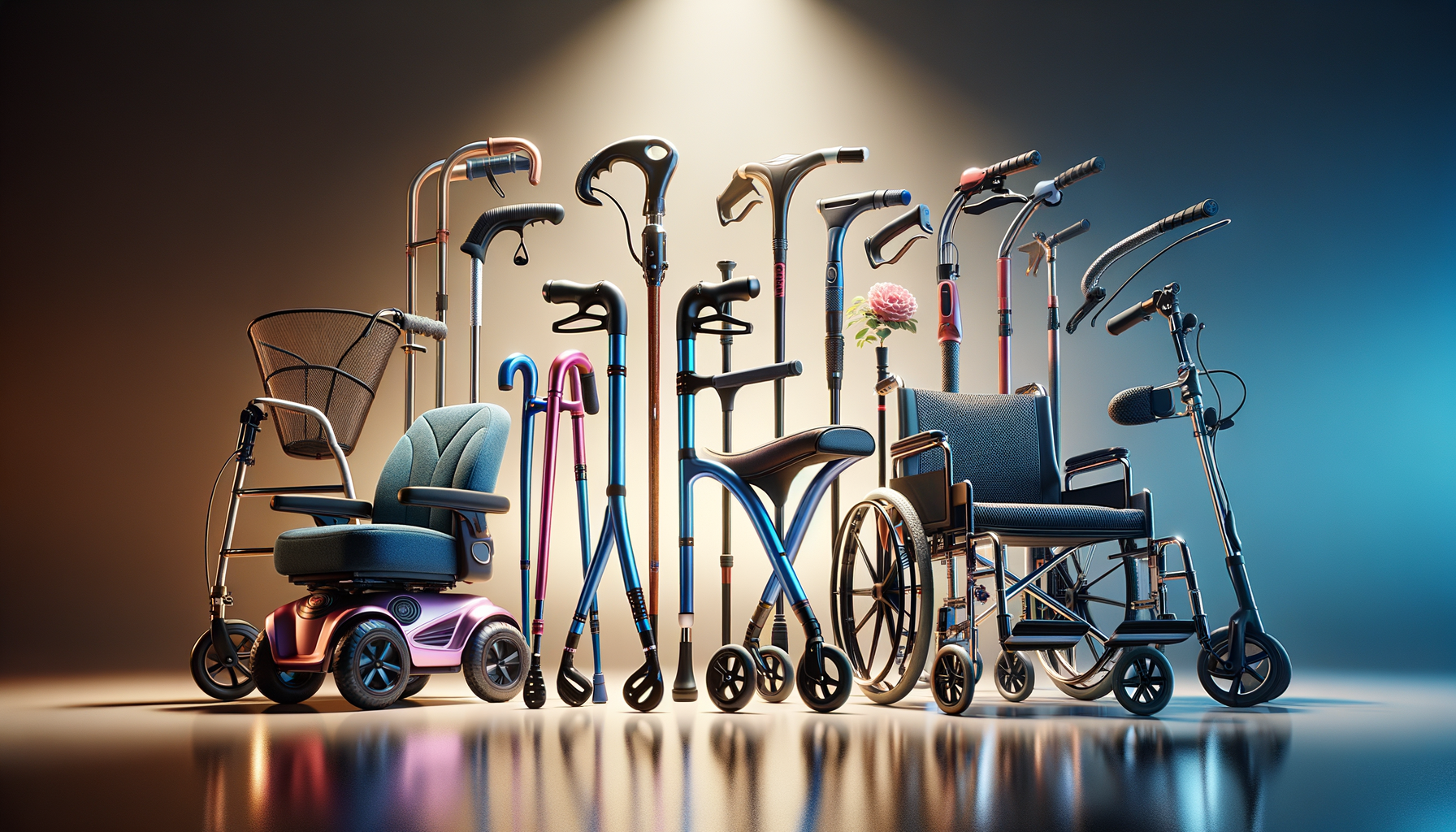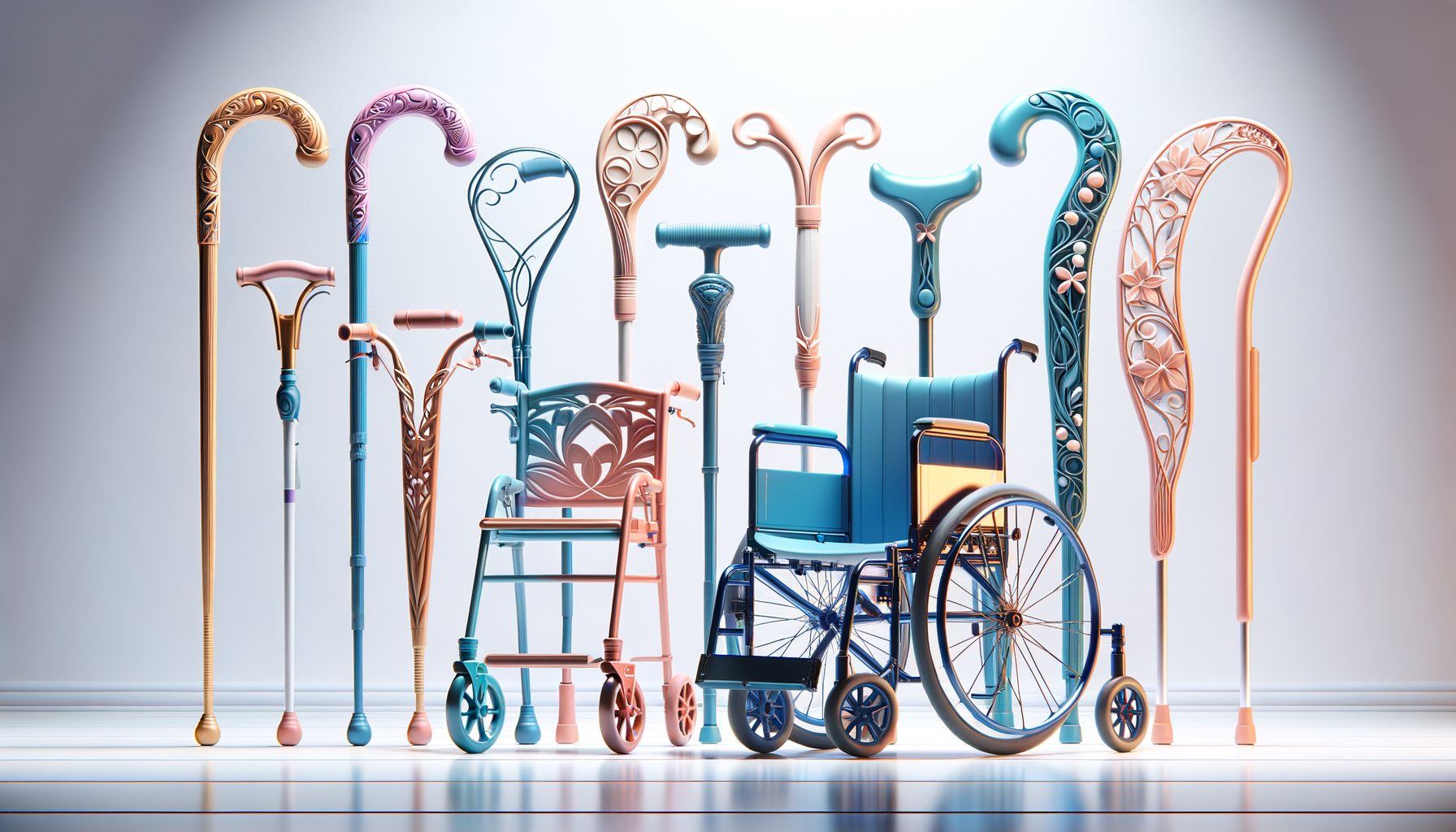The Evolution of Mobility Aids
Mobility aids have come a long way from their rudimentary origins. Initially, they were simple devices designed solely for function, often lacking in aesthetics and comfort. Over time, as the needs and expectations of users evolved, so did the design and functionality of these aids. Today, mobility aids are not only functional but also stylish, reflecting the user’s personality and lifestyle.
Historically, walking sticks and canes were among the first mobility aids, used by those needing support due to age or injury. These early aids were often crafted from wood, with limited design variations. As technology advanced, materials like aluminum and carbon fiber became popular, allowing for lighter and more durable aids.
In recent years, there has been a significant shift towards making mobility aids more user-friendly and aesthetically pleasing. This shift is driven by the growing demand from seniors who wish to maintain an active lifestyle without compromising on style. As a result, manufacturers have begun to focus on creating products that are both functional and fashionable.
Today, mobility aids are available in a wide range of designs and colors, catering to different tastes and preferences. From sleek rollators to elegant walking stick umbrellas, these aids are designed to blend seamlessly into the user’s lifestyle, providing the necessary support while also enhancing their confidence and independence.
Types of Modern Mobility Aids
The variety of mobility aids available today is vast, each designed to meet specific needs and preferences. Understanding the different types can help users make informed choices that best suit their lifestyle and mobility requirements.
Here are some of the most popular types of modern mobility aids:
- Walking Sticks and Canes: These are ideal for individuals who need minimal support. They are lightweight and come in various designs, including folding options for easy storage.
- Rollators: These are walkers equipped with wheels, making them suitable for individuals who require more stability. Rollators often come with features like seats, baskets, and brakes, offering convenience and safety.
- Wheelchairs: For those with limited mobility, wheelchairs provide essential support. Modern wheelchairs are designed to be lightweight, foldable, and easy to maneuver.
- Mobility Scooters: These are perfect for individuals who need to travel longer distances. Scooters offer comfort and independence, with features like adjustable seats and storage compartments.
Each type of mobility aid has its own set of advantages, and the choice largely depends on the user’s specific needs and lifestyle. Consulting with a healthcare professional can provide valuable insights into which aid might be most beneficial.
Design Trends in Mobility Aids
In the world of mobility aids, design trends are continually evolving to meet the needs of users who desire both functionality and style. Today’s seniors are more fashion-conscious than ever, and manufacturers are responding by creating aids that are not only practical but also visually appealing.
One of the significant trends is the use of bold colors and patterns. Gone are the days of dull, clinical-looking aids. Now, users can choose from a variety of vibrant colors and stylish patterns that reflect their personality and taste.
Another trend is the incorporation of technology. Modern mobility aids often feature advanced technology, such as GPS tracking, ergonomic handles, and adjustable settings, to enhance user experience. These features not only improve functionality but also ensure that the aids are comfortable and easy to use.
Furthermore, there is a growing emphasis on sustainability. Many manufacturers are now using eco-friendly materials and production methods to create mobility aids that are not only stylish and functional but also environmentally responsible.
These design trends highlight the industry’s commitment to creating products that cater to the diverse needs and preferences of modern seniors, ensuring they can maintain an active lifestyle with confidence and style.
The Impact of Mobility Aids on Lifestyle
The introduction of stylish and functional mobility aids has had a profound impact on the lifestyle of seniors. These aids not only provide the necessary support but also empower users to lead active and independent lives.
One of the most significant impacts is the boost in confidence that users experience. With aids that are both stylish and functional, seniors feel more comfortable and less self-conscious when using them in public. This increased confidence often leads to greater social interaction and participation in community activities.
Mobility aids also enhance the quality of life by allowing seniors to continue engaging in activities they enjoy. Whether it’s going for a walk in the park, shopping, or traveling, these aids provide the support needed to maintain an active lifestyle.
Moreover, the availability of a wide range of mobility aids means that seniors can choose products that best suit their individual needs and preferences. This personalization ensures that users are more likely to use their aids regularly, leading to better mobility and overall well-being.
In essence, modern mobility aids are not just tools for support; they are enablers of independence and active living, allowing seniors to enjoy life to the fullest.
Choosing the Right Mobility Aid
Selecting the right mobility aid is crucial for ensuring comfort, safety, and independence. With so many options available, it can be overwhelming to decide which aid is the most suitable. Here are some factors to consider when choosing a mobility aid:
- Level of Mobility: Consider the user’s current level of mobility and any specific challenges they may face. This will help determine whether a cane, rollator, wheelchair, or scooter is the most appropriate choice.
- Environment: Think about where the aid will be used most frequently. For instance, a lightweight cane may be ideal for indoor use, while a sturdy rollator might be better suited for outdoor activities.
- Features: Look for features that enhance comfort and functionality, such as ergonomic handles, adjustable heights, and built-in storage.
- Style and Design: Choose a design that reflects the user’s personality and preferences. With so many stylish options available, there’s no need to compromise on aesthetics.
Ultimately, the right mobility aid should provide the necessary support while also aligning with the user’s lifestyle and needs. Consulting with healthcare professionals and trying out different aids can help ensure the best choice is made.




Leave a Reply